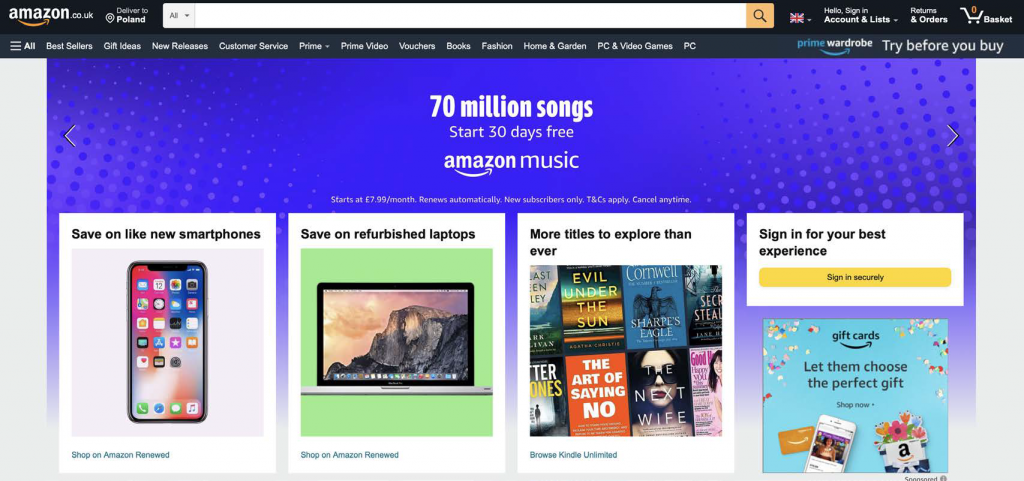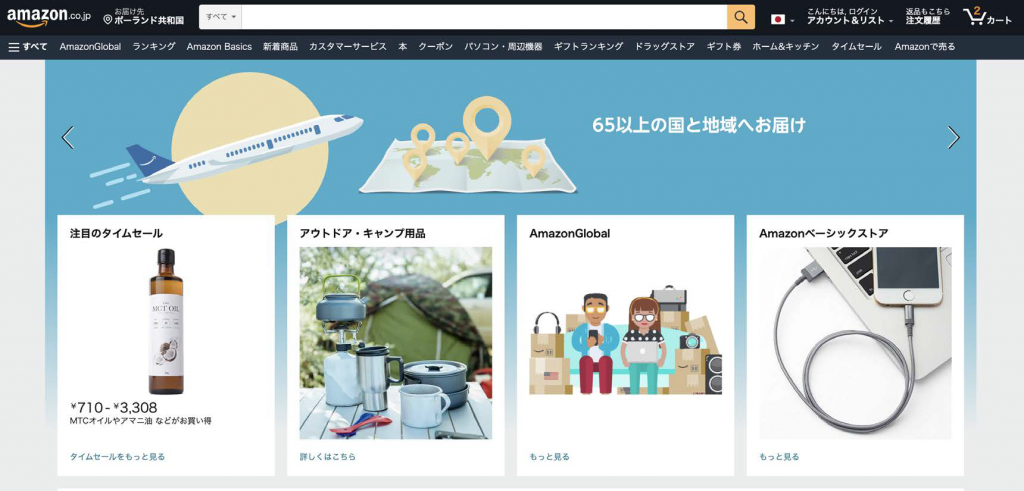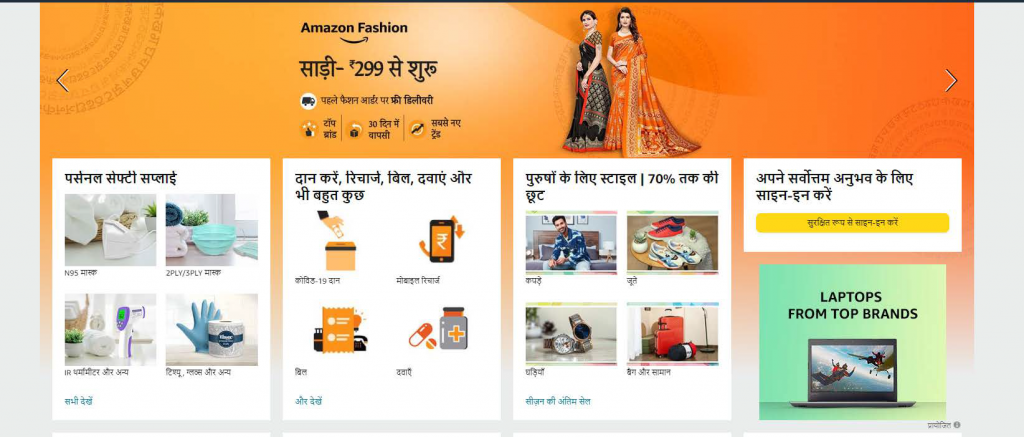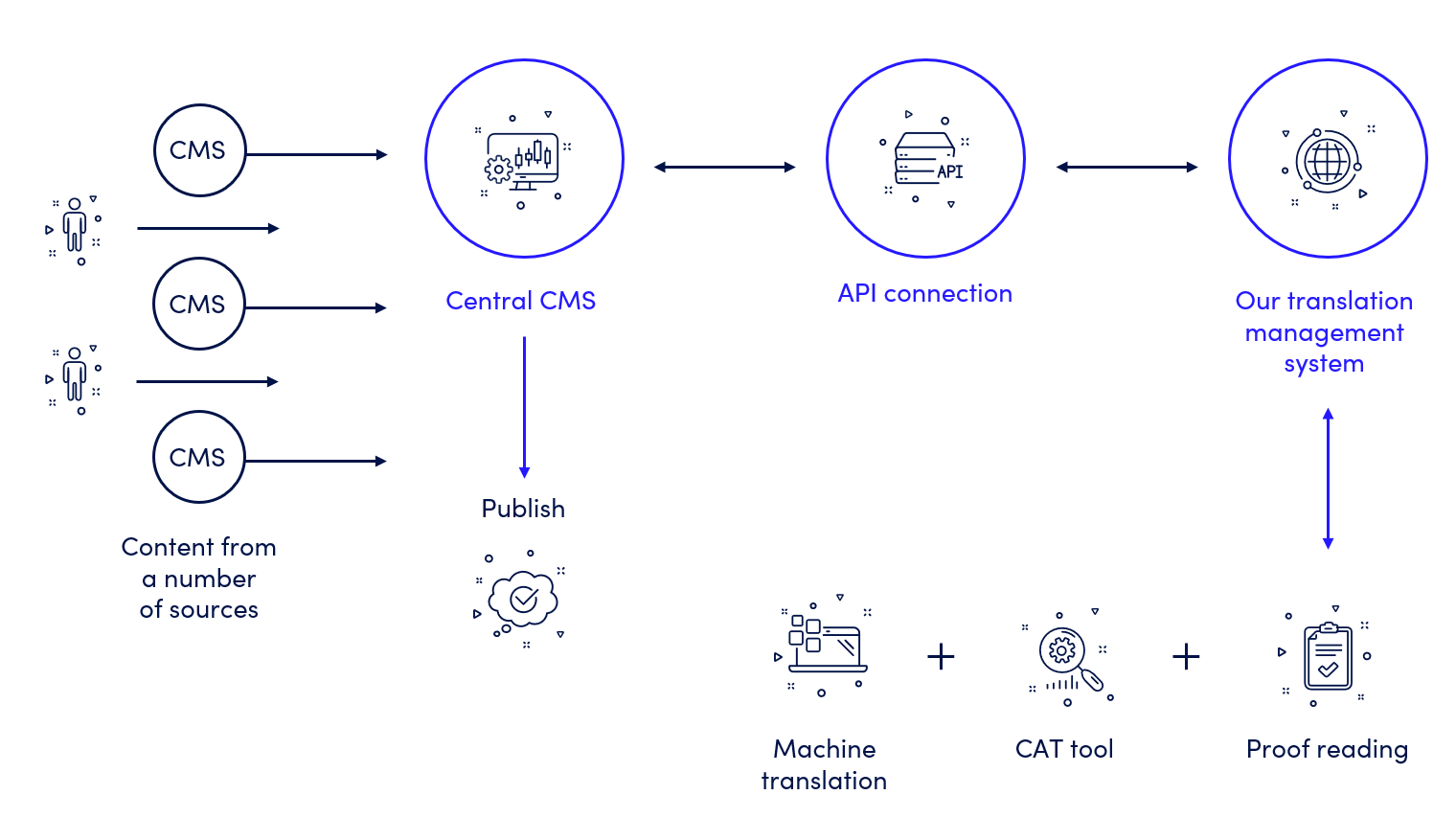
Your business is faced with two realities: you’re competing for customers in a global market, and your success depends on the quality of your online marketing content.
But how can content be multinational, multilingual, and multicultural, and still be effective?
Before the days of e-commerce, when it was simply ‘commerce’, a business’s influence would radiate outward from wherever it was based. Success locally would provide a springboard for regional and, perhaps, national success.
Companies whose reach spread beyond national borders—Coca Cola, Kodak, Gillette, etc.—were the exceptions, an elite group able to transcend national identity to become global brands.
That was then. Now, businesses are based online. Once launched, even the smallest start-up is open for business to every person on the planet with an internet connection.
The internet has also changed the way a business markets itself and its products. No longer is a well-placed newspaper ad or an eye-catching billboard the way to convert potential shoppers into paying customers.
Today, businesses attract commercially savvy shoppers with tailored online content that appeals to their target audience. This gradually builds relationships that eventually culminate in increased sales.
Welcome to the world of e-commerce localization.
What is e-commerce localization?
E-commerce localization is the process of taking all the content of an online business’s website or app—including product information, blogs, videos, social media posts, graphics, and eBooks—and adapting it so that it resonates strongly with each individual market, wherever it may be in the world.
Much more than simple translation, localization involves the transformation of content so that it appears to have been made by and for the local market. This means modifying text to suit local interests, events, and behaviors, adjusting images to reflect local environments, and adopting local regulations, units of measurement, formatting, and more.
It also means understanding the cultural differences between markets. This will impact everything from the products displayed and the type of images used to the amount of text considered acceptable.
To see localization in practice, take a look at Amazon’s home page in the company’s different markets on the same day. The site created for shoppers in the United Kingdom promotes different products in a different way from the site tailored towards shoppers in Japan. Click over to the Indian site, and the content is different again.

The UK site focuses on Amazon’s own products and services.

The Japan site focuses on their ability to ship products globally.

The Hindi version of the India site uses smaller, compressed images and more text.
Rather than taking what worked in one part of the world and rolling it out globally, Amazon has taken their locally focused approach to each individual market and created content tailored to their precise needs.
By localizing all forms of content into a new language and a new context, an e-commerce company can build a strong global brand and maximize returns in every market.
75% of people want to purchase products in their native language
92.2% want to make purchases in their local currency
CSA Research
How does localization benefit e-commerce?
For an e-commerce company, the benefits of localization can be summed up simply: localization means more sales.
More specifically, adjusting a site’s content to suit the socio-cultural context of different local markets around the world provides a business with a wide range of opportunities to tap into lucrative international markets.
Here are 10 of them.
1. Be local in multiple markets and generate revenue 24/7
Localization transforms a single-language, single-market e-commerce store into a globally accessible portal, where shoppers from multiple markets around the world can enjoy a local shopping experience with all the supporting content that entails. This gives business an international footprint with a huge and diverse customer base.
2. Scale up rapidly and become an instant global brand
Growing a traditional brick-and-mortar business into a global brand is a slow, iterative process punctuated by protracted legal issues and building delays before staff can even get face-to-face with customers. Localization, however, allows an e-commerce site to leapfrog all this time-consuming effort and enjoy an immediate global presence, whatever the size and nature of the business.
3. Out-local the locals and beat the competition
Online shoppers are inundated with choice, with each competing product or service a simple mouse click away. As a result, it’s easier to switch sites than struggle with any obstacles or uncertainty. Localization, however, ensures everything from product descriptions to the checkout process and social media engages shoppers with the natural ease of a familiar local store—so they’ll have no reason to leave.
4. Beat local bureaucracy with native legal know-how
Different countries, and sometimes regions within countries, have their own regulations relating to areas such as tax and data privacy. Localizing all aspects of an e-commerce company’s interaction with a country, from the information included in a product description to the HR documentation available to international employees, is a sure way for a business to fully comply with all relevant rules and regulations.
5. Capitalize on local opportunities and never miss a spending spree
North American and European retailers have traditionally planned their year around events guaranteed to trigger a spending spree. These occasions include Valentine’s Day, Mother’s Day, Father’s Day, Black Friday, Cyber Monday, and Christmas.
A localized site and marketing campaign, however, will deliver a similar bonus for special days and events unique to regions and cultures around the world. For example, Diwali in India, El Buen Fin in Mexico, and Singles’ Day in China, which generates more revenue than Black Friday and Cyber Monday combined.
6. Accelerate the buying process with a customer-customized checkout
An unfamiliar or ambiguous checkout gives shoppers a reason to quit and shop elsewhere at the very last step of their purchasing journey. Localization ensures any shopper from any market only encounters their own preferred methods of payment and their own currency. The same is true for dimensions, dates, and any other culturally determined norms and practical realities that make browsing and buying as effortless as possible.
7. Be part of the local community and influence social media
Shoppers are becoming increasingly skilled at collating and comparing product information before making a purchase. In China and the Far East especially, research based on personal recommendations is at the heart of the shopping experience. Also, many search engines, such as China’s Baidu, rank forum posts among their search results.
A localized social media presence, therefore, will encourage buyers to contribute reviews in their native language, which will promote the products to more shoppers, increase the site’s visibility, and raise the company’s prestige as an active member of the local social media community.
8. Rank highly and be found by every target market
Ranking highly in Google searches is one of the prime motives behind much online content created in Europe and North America. A global e-commerce site, however, must be optimized for searches carried out in each local market around the world. This localized form of SEO involves applying the same dedicated SEO techniques used for a site’s original language and location to each market’s preferred search engines, ways of phrasing, and search priorities.
9. Personalize the shopping experience to convert more customers
Recent advances in machine learning and artificial intelligence mean that regional and individual preferences can often be analyzed, interpreted, and implemented in real time. This kind of ultra-localization allows businesses to break free from the one-size-fits-all approach and present customers with personalized propositions that improve site traffic and conversion rates, and can also command a price premium.
10. Maximize market insights with precision-targeted data
One factor that enables greater personalization is the ability of localized e-commerce sites to harvest huge amounts of valuable data regarding consumer behavior. In some markets, such as China, online merchants have access to even more customer data than they do in the West. This ocean of data can be used to discern patterns and evaluate personal preferences and upcoming e-commerce trends.
What aspects of e-commerce can be localized?
Localization is not limited to an e-commerce site’s home page—it is not even limited to language. By taking a holistic approach, localization generates a level of understanding and familiarity for the site’s visitors that goes beyond words.
Here is an overview of how and why the different aspects of an e-commerce business are localized. While they vary in nature, what they all have in common is that, by adapting the content for a local market, the localized versions will always create the same impact and meaning as the original version.
Product descriptions
Localizing e-commerce product descriptions is more sophisticated than simply translating text. For an item of clothing, for example, sizes must be converted into the local sizing system. The product name may also need localizing, especially if it reflects the item’s use. Even the product itself may be replaced by an alternative more suitable for the local market. Similarly, the choice of which products receive priority listing and feature in promotions will vary from market to market.
Example: Nintendo
The US in the 1980s had a very conservative attitude to video games. Japan, in contrast, couldn’t get enough of the cartoon-like violence. As a result, Nintendo localized their American promotional content to appeal to families, removing all references to sexuality, bad language, and violence that was present in the Japanese campaigns.
40% of Internet users will not buy products online if information is not in their own language.
CSA Research
Branding
Strong, consistent branding is crucial in e-commerce. But how can a brand instill the same sentiment in shoppers across several languages and cultures? Rather than a literal translation of branding material, it’s all about conveying the brand’s attitude.
This, coupled with ensuring that shoppers receive timely, on-brand communications, will make locals feel the brand is part of their community—and they are part of the brand’s community.
Example: Coca-Cola
When the international drink giant entered the Chinese market, the Chinese translation of the iconic brand name had the meaning ‘bite the wax tadpole’. An alternative phrase was soon found that conveyed the brand’s attitude, rather than the literal translation.
Customer Support
In e-commerce, the first line of customer support is usually FAQs followed by a virtual assistant of some kind. While all written guides must be localized for local markets, AI-driven chatbots must also be adapted to understand and respond to multiple languages and cultures. This can involve incorporating features such as the direction text is written in, local currency units, and systems of measurement, as well as the needs of each region’s population.
Example: US vs. Japanese Chatbots
In the US, a chatbot may greet users by their first name. In Japan, however, where this would be considered disrespectful, the chatbot should greet users by their last name followed by the suffix -san for added respect.
US businesses lose an estimated $62 billion each year as a result of bad customer experiences.
Vonage Global Customer Engagement Report, 2020
Images
Images can include anything from a picture of a product to a diagram, chart, or infographic. A well-chosen image communicates a valuable feature or benefit to the shopper. Whatever way that message is communicated, the image needs to be localized.
Factors that may be found in an image that require localization include:
- References to sports, movies, or musicians that are not popular worldwide
- Religious symbols, such as a Christmas tree, or religious clothing, such as a hijab
- Women, where different attitudes towards body modesty may be an issue
- Animals that provoke different sentiments in different parts of the world
- Visual metaphors, such as color and body language, whose meaning varies around the world
- Text, whether it features prominently or in the background, for example on a newspaper
- Alt-text used to describe images for the visually impaired or when the image cannot load
- Embedded links and the content they lead to need to be appropriate for the local user
- Flags and other symbols of national identity, such as road signs
- Local practices, such as the side of the road people are driving on
Example: McDonald’s
Every country’s local McDonald’s website is customized according to that country’s preferred color palette, graphic style, and cuisine:

McDonald’s India

McDonald’s South Korea

McDonald’s Japan
Video
Videos must also take local cultural tastes into account. An enjoyable scene in one culture may be off-putting in another. While localizing video may seem like a daunting prospect, the results are worthwhile.
Example: Apple
One of the world’s most successful global brands is well aware of the importance of localization, as evidenced in this ad as seen in the UK, France, Germany and Japan. It’s nearly identical, but contains subtle differences that reflect the specific target market, including on-screen text, voiceover language, and actor choice.
Apple ad from the UK, France, German and Japan
User-interface messaging
Well-crafted user-interface (UI) messaging—such as menu options, error messages, navigation tools, and button text—expediates sales and boosts conversion rates and customer retention. Effectively adapting this aspect of website text for international markets will address the context of the message to generate a fully localized user experience.
Example: Buy Now
Adapting the familiar e-commerce message ‘Buy Now’ for international markets is not as simple as it might appear. Different character counts will require either a button redesign or rephrasing for local markets.
English: Buy now
French: Acheter Maintenant
88% of online consumers are less likely to return to a website after a bad experience.
Bluespace
Search Engine Optimization
Growing an e-commerce business globally means using the same precision-targeted SEO techniques already deployed in your home market. Search terms must be localized, not just translated.
This means being aware that a search term may be phrased differently in different regions, while word choice may vary between countries that speak the same language, for example couch vs. sofa. Search priorities may vary too, depending on differing climate and economic factors.
Example: Local fashion
A fashion site might prioritize keywords such as ‘coats’, ‘boots’, and ‘waterproofs’ in Norway, but focus on ‘sunglasses’, ‘sandals’, and ‘beachwear’ in Spain.
Mobile apps
With more than three billion smartphone users worldwide, app localization is a strategic necessity for any e-commerce business. However, the seemingly harmless use of graphic symbols and emojis can cause a stir in certain markets.
Example: Devil horns
The ‘rock on!’ hand gesture signaled widely in the US is used in Italy, Spain, Greece, Brazil, Argentina, and Colombia to mock an unfaithful romantic partner.

Blogs
A localized blog goes a long way to establishing a brand in a shopper’s mind. It does this by including locally relevant content that resonates with people living in that area through locally targeted SEO and newsworthy stories from the region.
Ideally, it will be created especially for that particular market with input from someone who is part of the local community.
Example: Local events
If a country is hosting a big event, such as the Olympics, writing blogs about the up-coming activities and tying it all in with products and promotions available on the company’s site will allow the blog to be relevant, re-posted, and read by many more people than normal.
76% of organizations take a strategic approach to managing their content.
Marketing Charts
Social media
It takes more than just localizing a website for a business to be multinational. To engage with potential shoppers in specific markets around the world, it is also necessary to build a presence within the local social media communities. As well as posting tailor-made content, social media localization also involves changing images, videos, captions, and hashtags to optimize the popularity of the posts.
Example: Starbucks
The global coffee company recognized that coffee drinkers around the world prefer different drinks, have different cultural backgrounds, and use different hashtags on social media. So, they created localized Instagram profiles in each country.

Starbucks Instagram – Korea

Starbucks Instagram – Canada
Marketing
Consumers are in charge of the marketing content they consume. They can select from a multitude of media and choose to block ads and skip commercials as they do so.
Add to this the need to market simultaneously to many different languages and cultures, and modern-day marketing is beginning to look like an insurmountable challenge.
However, by ensuring marketing material directed towards international markets has a laser-like focus on each market’s needs, lifestyle, and behaviors, localized content appears to all intents and purposes to be generated locally—which will be reflected in the strategy’s ROI.
Example: Airbnb
Rather than taking its Western marketing to China, Airbnb reinvented the business as a Chinese company to be perceived as such by its clientele, going so far as to rename the company Aibiying. As a result, the company was never overshadowed by its native competitors.
Geo-targeted marketing is 6 times more successful than posts shared globally.
One Sky App
Corporate Documentation
The range of corporate documents relating to employees as well as customers depends on the size and nature of an e-commerce business, as well as the markets in which it trades.
Corporate documentation can include training materials, instruction manuals, terms and conditions, and a whole host of HR-related material.
Providing this content in people’s native language and adapting it to suit each cultural and regional context, instills company values throughout the organization and its clientele.
Example: German vs. Italian Business Communication
The German approach to professional communications is very straightforward and business-like. The Italian approach, in contrast, is more casual, where the boundaries between professional and personal relationships are blurred.
HR localization drives agility, growth, and employee engagement.
Deloitte
How To Localize Your E-commerce Website
Any business operating online has an immediate potential global audience. It can make sense, therefore, to localize content from the start and develop multiple international markets simultaneously.
An e-commerce business that is already established, but hasn’t taken the opportunity to localize, should consider these two questions:
- Will your products interest people beyond your national boundaries?
- Are you able to satisfy an increased global demand?
Answer yes to both questions? It’s time to localize!
E-commerce localization best practices
Considering the many interrelated aspects we’ve covered in this guide, the localization process can seem like a formidable task. However, understanding that localization is not a single, big-bang event, but an ongoing way of working that integrates with existing business processes over time, the route to localization becomes more manageable.
Here’s how it works.
1. Framework:
Establish a framework within which the many moving parts of a multinational, multilingual, multicultural content delivery system can operate. This involves making decisions regarding:
- Management structure
- The balance between central and regional control
- The assets that need to be localized
- To what level content will be localized—national, regional?
- The languages that will be supported
2. Workflow: Determine processes that ensure the workflow always moves forward. This can involve:
- Scheduling and resourcing the content workflow, from conception to creation and publication, with regulatory and compliance requirements built into the system
- Collaboration between teams, both internal and external
- Financial planning
- Service and support
3. Understanding: Build understanding of and influence in local markets. Rather than trying to control everything from the home market, take advantage of the assets and opportunities available ‘on the ground’ in each region.
- Assess local competitors and learn from their strengths and weaknesses.
- Encourage each market to be proactive and free them to operate in parallel, rather than wait to be fed content from a different part of the world.
- Cultivate relationships with local social media influencers.
4. CMS: Manage the process with a content management system (CMS) built for international growth.
- Populate the website with a constant flow of up-to-date content via a user-friendly interface.
- Combine the CMS with an application programming interface (API) to create a simple and efficient way of taking control of every aspect of a site’s content.
- Responsive design ensures content looks great on any device, from mobile phones and tablets to laptops and desktop computers.
5. Machine Translation: Expedite language conversion with machine translation (MT). MT refers to the use of computer technology to translate a piece of text into a different language with minimal human involvement. The most recent development, neural machine translation (NMT) possesses both speed and accuracy—a combination that could transform e-commerce.
- High-end MT can be used when meaning must be maintained, but individual word choice isn’t crucial, such as with blogs.
- MT alone is not suitable for use when content aims to evoke emotions in the reader, such as with marketing material, or involves specialist and precise terminology, such as with legal documentation.
6. Localize: Growing a large, loyal customer base simultaneously in multiple locations around the globe is a big challenge. Here are some common e-commerce localization pitfalls, and how you can avoid them:
- Expanding text. Translated text rarely occupies the same amount of space as the original text, which is why room for expansion needs to be considered from the early stages of an e-commerce site’s design.
- If a brand or product relies on casual or colloquial language, simple-word-for-word translation can produce unintended results. Instead, it is important to recreate the meaning and tone of the text.
- Stale content. Regularly updating an e-commerce site’s content ensures it remains fresh and relevant to the target market, boosting search-engine rankings and providing an opportunity to introduce new product features and price changes.
- Inadequate testing. Meticulous analysis by an external team of testers familiar with the language, culture, and requirements of each local market is the only way to be sure no detail is missed and that the site is optimized for both customers and search engines.
A bespoke e-commerce localization solution
E-commerce localization is a huge, varied, and continual process involving comprehensive insight into native markets, linguistic expertise, and cutting-edge technology. At Summa Linguae Technologies, we deploy these specialties to provide across-the-board localization services for online retail.
A customizable solution developed by Summa Linguae is the Content Connector. This agile, automatic, and seamlessly integrated global content management solution is built around the needs of a business’s e-commerce localization needs.
The Content Connector automates the translation of web content, product information, and SEO, while allowing users to continue using their preferred CMS, PIM, CRM, and ERP solutions. The technology integrates with current systems to become an intrinsic part of a business’s existing content creation and publication process.
The exporting and importing of product information is automatic, and filtering is based on product, category, or language. The product works in the background, collating and localizing content, without any delays or interference to day-to-day operations.

How we help with e-commerce localization
There are five key steps we take in any e-commerce localization project:
- Create a roadmap of your global strategy: Where is your company today? Where do you want to be tomorrow?
- Name the languages you’ll need: We will help you choose the right languages according to your needs and the potential of target markets.
- Think about the languages as a way to gain customers: Think about an ideal customer’s experience and we’ll translate it into another language.
- Use a language’s potential in more than one country: One language can help you reach customers in more than one region. French is important in 31 countries and Spanish in 24.
- Define your technology needs: Work with one central CMS connected to a translation management system and CAT tools.
Summa Linguae Technologies’s e-commerce localization solutions will help you flourish in international markets.
Summa Studio is our in-house, all-in-one multilingual content platform. It’s the perfect sidekick for your global content platform.
To discuss how we can help your business reach its global potential, contact us today.


